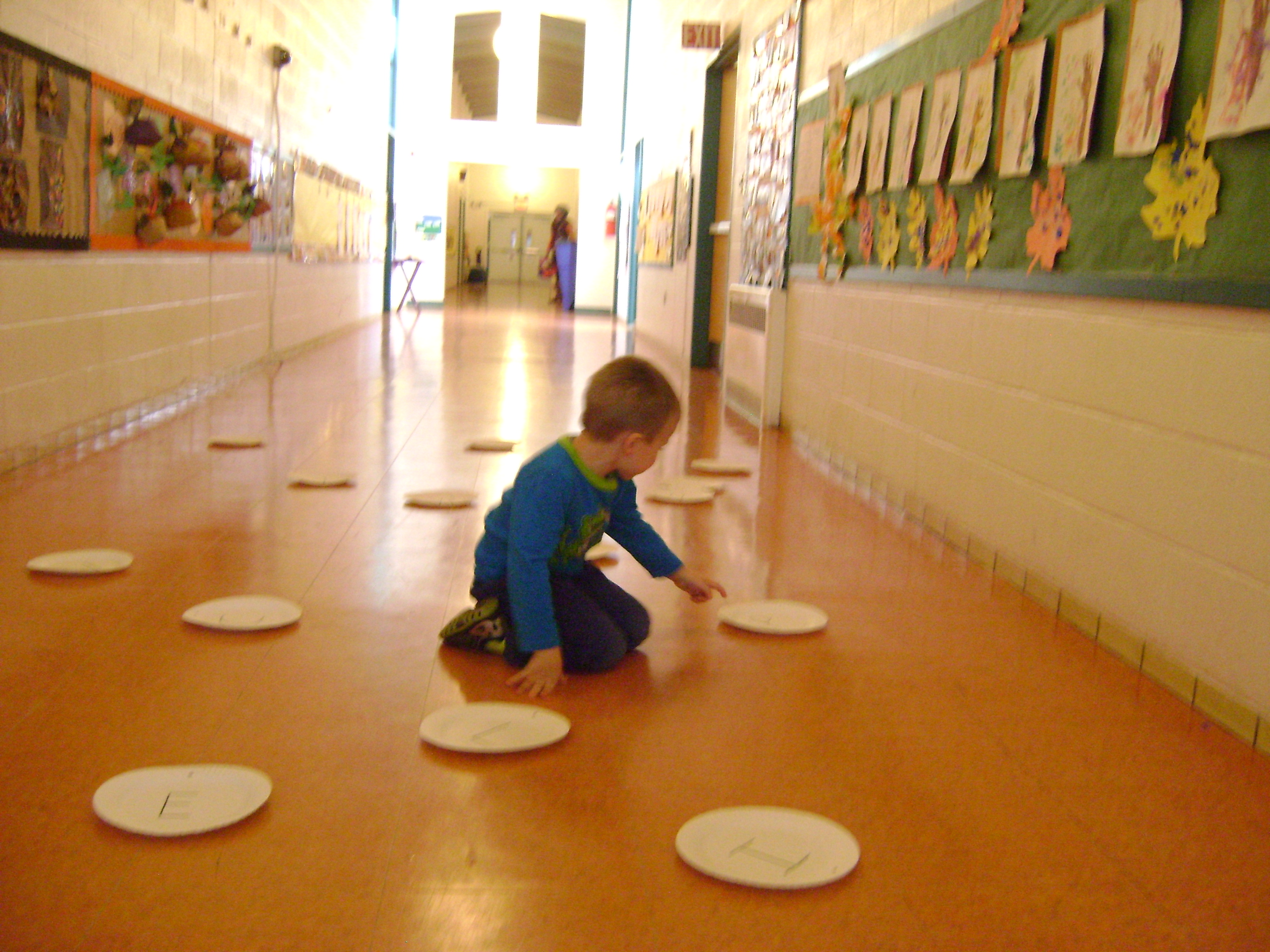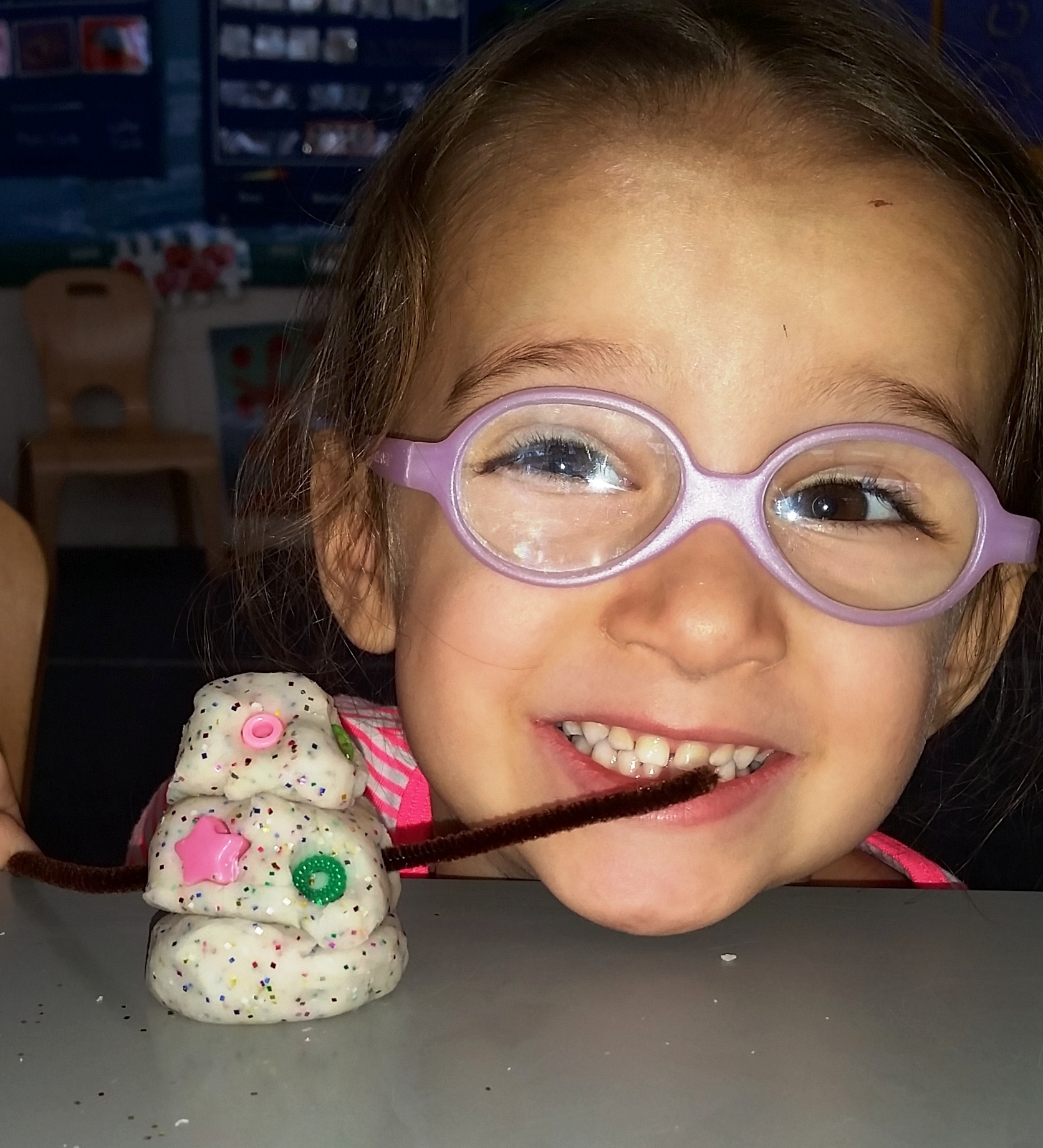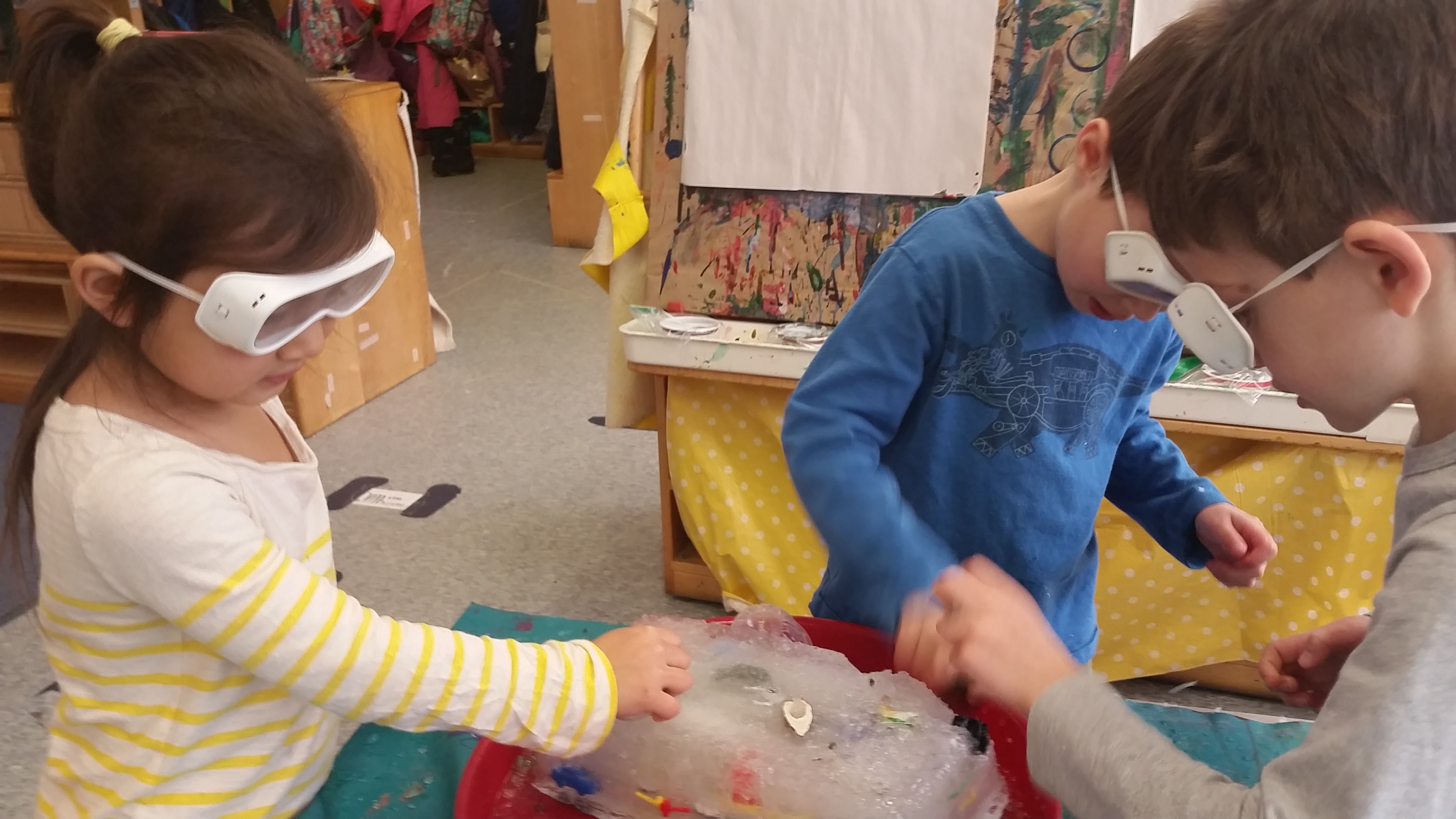Sunshine Scoop
Puxatawney Phil did not see his shadow last week and predicted an early spring. However, Mrs. G., Drumlin Farm’s hedgehog, was at odds with Puxatawney Phil and she did see her shadow indicating six more weeks of winter. Using scientific inquiry skills, the children had a lot of fun predicting what would happen. The children demonstrated their math skills by graphing their hypotheses, and after finding out Phil and Mrs. G.’s responses, counted out how many of our friends agreed with each groundhog.
Learning about groundhogs and making groundhog puppets coming out of their holes (paper cups), peaked our interests and led us to explore and develop an awareness of different animal habitats. Through book and online research, we discovered the answers to several questions: Where do animals go in winter? How do they stay warm? Where do they find food? How does their fur/skin change to compensate for the colder temperatures? To foster an understanding of “temperature” we talked about being hot in summer and cold in winter. Extending the curriculum to connect science, math, and literacy, we created a large thermometer in our classroom. We graphed our predictions as to whether bubbles would freeze on a particularly cold day and documented our findings in our Science Journals.
We have been participating in a Jan Brett author study as part of our language/literacy strand. Some of our activities included comparing and contrasting “The Three Snow Bears” and “Goldilocks” in which we used illustrations from both stories to create Venn diagrams. We even made gingerbread people cookies while retelling and sequencing the events of Jan Brett’s “Gingerbread Baby’. So much fun!
In February, Sunshiners began using the Lexia Core5 Reading Program. Lexia Core5 is a fun computer program which helps develop reading and technology skills. Each child has a personal log in and is able to work independently. Some of the targeted skills taught are phonics, vocabulary and comprehension. Learning to right and left click on a mouse, use the finger pad on the lap top, maneuver the arrow across the screen and select the intended object, are technology skills that will benefit the children in kindergarten and beyond. The best part is the children learn by having fun! They enjoy the program and are eager for their turns.
The Everyday Math Program provides opportunities to explore and create patterns through art projects. In one activity we used different shapes of pasta and in another, used colored beads to make jewelry. We will continue our exploration of patterns and expand our learning by sorting pasta and other objects, according to different attributes such as: size, shape, color and texture.

A Look Ahead
Jan Brett stories have piqued our curiosity about people and animals that live in cold regions. We have begun creating a winter scene on a large piece of foam board using modeling clay, and a variety of art materials. We’ll connect our learning about animals & habitats by adding some creatures and features to our winter scene. Sunshiners will continue conducting winter related science experiments, making predictions, observations, and comparisons. We’ll see if our estimations and hypotheses panned out, explore and discuss “why?” or “why not” and document our findings.
Starburst Happenings
Working collaboratively with peers and teachers, we figured out where it is safe to slide down the hill head first on our bellies and where it is not! This minds-on and bodies-in-action experimenting provided the opportunity to practice communication and friendship skills, while simultaneously developing gross motor coordination. Going downhill either in sleds or in snow pants made for a great discussion about how seals and penguins travel by sliding on snow.

After researching in books about penguins and seals, we enjoyed a fictional story: “Snowmen at Night” by Caralyn Buehner. Outdoors, we had the opportunity to build two “snowmen at night”, but due to the warm afternoon temperatures, they did not even make it through the day! What were we to do? Make playdough snowmen of course! So, out came our snowy playdough along with pipe cleaners, beads, and small cups. The children soon had a group of snowmen friends awaiting nighttime adventures.

Our interest in winter inspired us to explore the formation and melting of ice. Outdoors the children love to show and compare the ice treasures they find. Indoors, we observe and describe them melting. We created a KWL chart. We Know warm temperatures melt ice, and we Wanted to Learn what else would? Our emergent curriculum practices turned the children’s questions into a series of scientific experiments! We froze a giant block of ice with a variety of treasures hidden inside. First, the children tried to melt the ice with Epsom salts; it melted a little bit, but not too much. Next warm salt water was applied with paintbrushes; once again, the results were not very exciting. Finally, rock salt was spread over the block of ice; those results were much more promising and we could even hear the ice crackling! The rock salt melted a sizable layer of ice; however the treasures were still stuck inside.
Now what should we do?
One of the children suggested using a hammer to break the ice, but we didn’t have any hammers. We talked about what people used as hammers, before hammers were invented…rocks! We have rocks! The children then donned their safety goggles, chose their rocks, and began to chip away at the ice. Soon a couple of treasures were freed from the ice.

These scientific experiments will continue over the course of the winter season!



